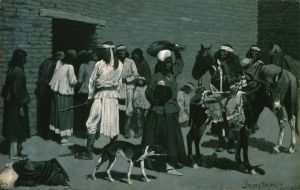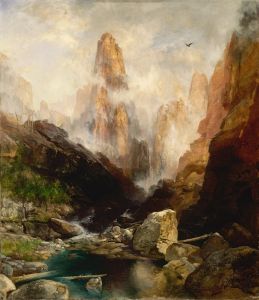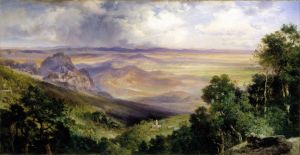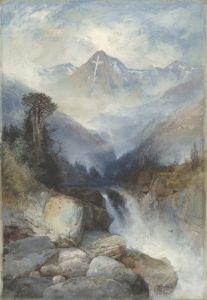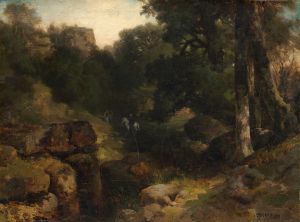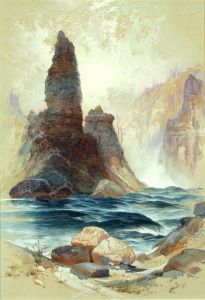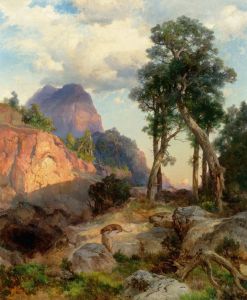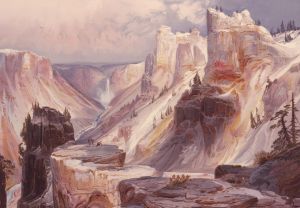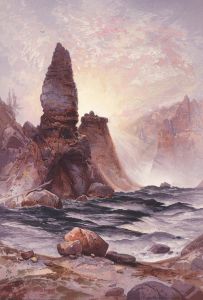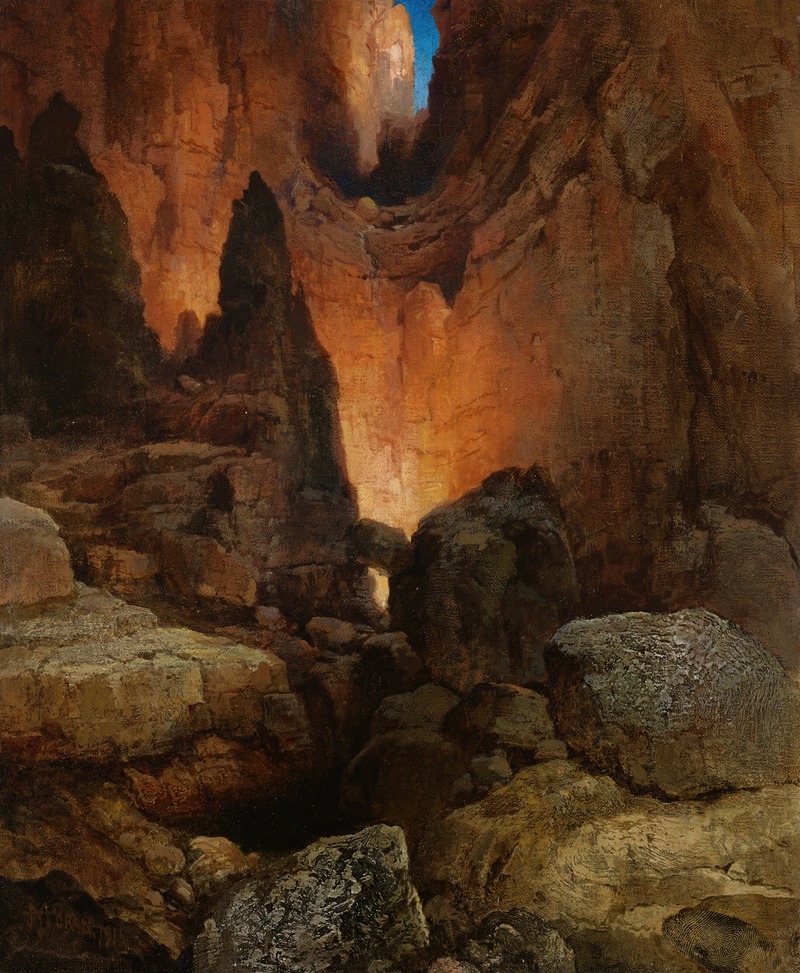
A Side Canyon, Grand Canyon of Arizona
A hand-painted replica of Thomas Moran’s masterpiece A Side Canyon, Grand Canyon of Arizona, meticulously crafted by professional artists to capture the true essence of the original. Each piece is created with museum-quality canvas and rare mineral pigments, carefully painted by experienced artists with delicate brushstrokes and rich, layered colors to perfectly recreate the texture of the original artwork. Unlike machine-printed reproductions, this hand-painted version brings the painting to life, infused with the artist’s emotions and skill in every stroke. Whether for personal collection or home decoration, it instantly elevates the artistic atmosphere of any space.
Thomas Moran's painting "A Side Canyon, Grand Canyon of Arizona" is a remarkable work that captures the grandeur and sublime beauty of the Grand Canyon, one of the most iconic natural landmarks in the United States. Moran, an English-born American painter, is renowned for his depictions of the American West, and his works played a significant role in the establishment of the national parks system.
Born in 1837, Thomas Moran emigrated to the United States with his family in 1844. He began his artistic career as an apprentice to a wood-engraver in Philadelphia, but soon transitioned to painting. Moran's early works were influenced by the Hudson River School, a mid-19th century American art movement known for its romantic portrayal of the American landscape.
Moran's association with the American West began in earnest in 1871 when he joined the Hayden Geological Survey of 1871, led by Ferdinand V. Hayden, to the Yellowstone region. His sketches and paintings from this expedition were instrumental in convincing Congress to establish Yellowstone as the first national park in 1872. This success cemented Moran's reputation as a leading landscape artist.
"A Side Canyon, Grand Canyon of Arizona" is one of Moran's many works that depict the Grand Canyon, a subject he returned to repeatedly throughout his career. The painting showcases Moran's skill in capturing the dramatic interplay of light and shadow across the canyon's vast expanse. His use of color and attention to detail convey the immense scale and rugged beauty of the landscape, evoking a sense of awe and wonder.
Moran first visited the Grand Canyon in 1873 as part of John Wesley Powell's second expedition. The experience left a profound impact on him, and he produced numerous sketches and paintings of the canyon. These works were crucial in raising public awareness about the Grand Canyon and contributed to the eventual designation of the area as a national park in 1919.
In "A Side Canyon, Grand Canyon of Arizona," Moran's mastery of composition and color is evident. He employs a palette of warm earth tones and cool blues to depict the canyon's layered rock formations and the sky above. The painting captures the dynamic and ever-changing nature of the landscape, with the play of light creating a sense of depth and movement.
Moran's paintings, including "A Side Canyon, Grand Canyon of Arizona," are celebrated for their ability to convey the majesty and spiritual essence of the American wilderness. His work not only reflects the natural beauty of the landscapes he depicted but also played a pivotal role in the conservation movement of the late 19th and early 20th centuries.
Today, Thomas Moran's paintings are held in high regard and can be found in major museums and collections across the United States. His legacy as a pioneering artist of the American West endures, and his works continue to inspire appreciation and preservation of the natural world.





